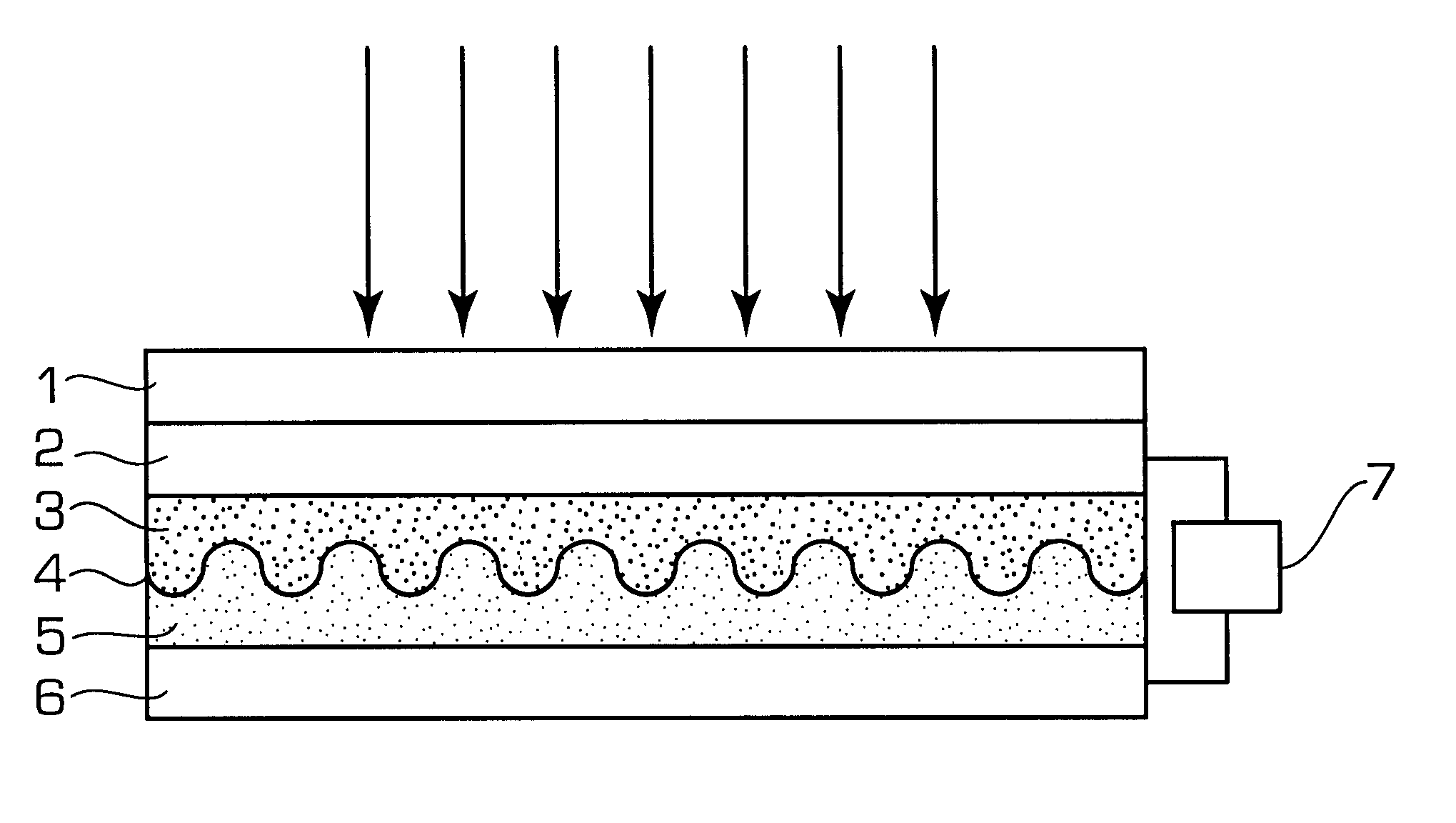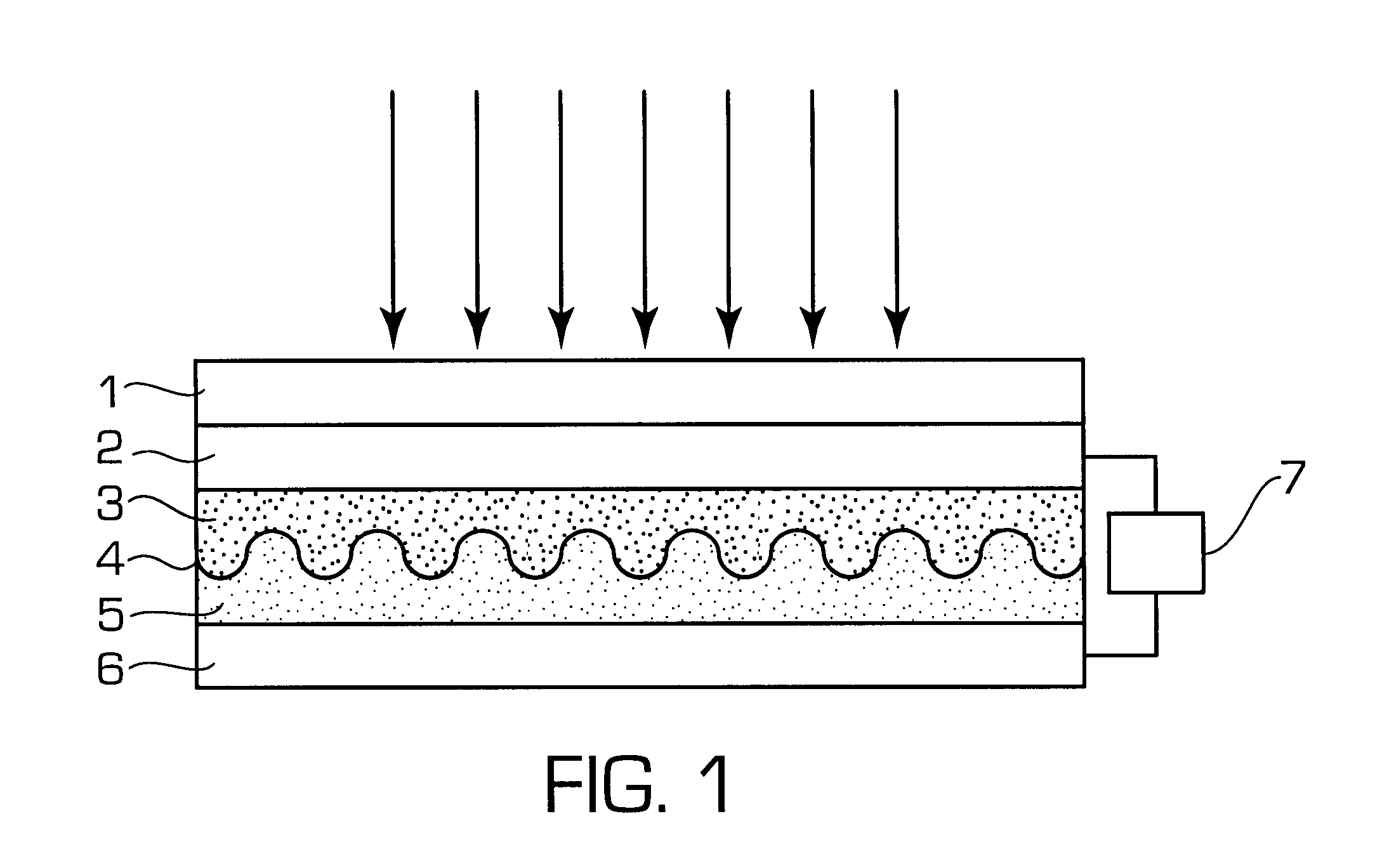Dye-sensitization-type photoelectric conversion element
a photoelectric conversion element and sensitization-type technology, applied in the direction of electrolytic capacitors, thermoelectric devices, electrochemical generators, etc., can solve the problems of low efficiency of photoelectric conversion, and low efficiency of cell structure,
- Summary
- Abstract
- Description
- Claims
- Application Information
AI Technical Summary
Benefits of technology
Problems solved by technology
Method used
Image
Examples
example 2
Distilled water (954 ml) was placed in a reaction vessel equipped with a reflux condenser and was heated to 95.degree. C. An aqueous solution (46 ml) of titanium tetrachloride (Ti contents 16.3% by weight, specific gravity: 1.59, purity: 99.9%) was added dropwise to the distilled water at a rate of approximately 5.0 ml / min with constant stirring at a stirring rate of approximately 200 rpm. During addition, the temperature of the reaction mixture was carefully controlled so as not to lower. Thus, the concentration of titanium tetrachloride was 0.25 mol / l (2% by weight as reduced to titanium).
Just after the commencement of addition, the reaction mixture in the reaction vessel became turbid. The reaction mixture was maintained at the temperature regardless of the turbidity. After completion of addition, the reaction mixture was further heated to the vicinity of the boiling temperature (104.degree. C.), and maintained at that temperature for 60 minutes, to thereby complete reaction.
The ...
example 3
An aqueous titanium trlchlorlde solution (Ti content: 28% by weight, specific gravity: 1.5, purity: 99.9%) was diluted with distilled water to prepare an aqueous titanium trichloride solution containing 0.25 mole / L as a concentration of Ti. The aqueous solution was cooled with ice so that the temperature was not elevated, and thus, the solution was maintained at a temperature not higher than 50.degree. C. A reaction vessel equipped with a reflux condenser was charged with 500 ml of the solution. While the content was heated to 85.degree. C. ozone gas having a purity of 80% was blown into the content at a blowing rate of 1 liter / mmn by an ozone gas-generating apparatus to effect oxidation reaction. The content was maintained, as it was, for 2 hours to complete the reaction.
The thus-obtained sol was filtered and vacuum-dried to obtain a powder. Quantitative analysis of the powder by the X-ray diffraction analysis revealed that the ratio (the intensity of the peak attributed to the 121...
PUM
| Property | Measurement | Unit |
|---|---|---|
| particle diameter | aaaaa | aaaaa |
| thickness | aaaaa | aaaaa |
| thickness | aaaaa | aaaaa |
Abstract
Description
Claims
Application Information
 Login to View More
Login to View More - R&D
- Intellectual Property
- Life Sciences
- Materials
- Tech Scout
- Unparalleled Data Quality
- Higher Quality Content
- 60% Fewer Hallucinations
Browse by: Latest US Patents, China's latest patents, Technical Efficacy Thesaurus, Application Domain, Technology Topic, Popular Technical Reports.
© 2025 PatSnap. All rights reserved.Legal|Privacy policy|Modern Slavery Act Transparency Statement|Sitemap|About US| Contact US: help@patsnap.com


